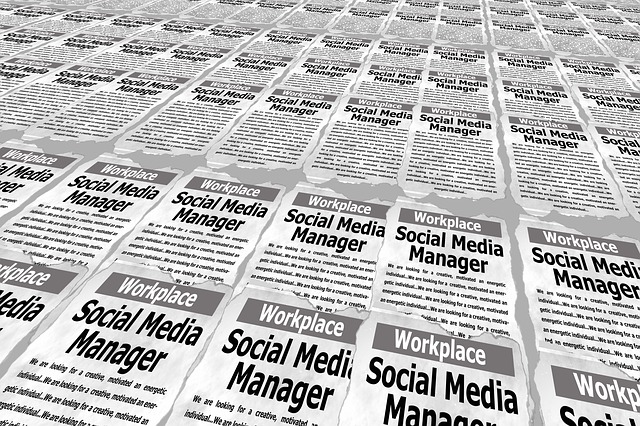Like any industry, marketing has its share of similar-yet-different acronyms, all of which can be confusing to those getting started with an online business. CPM, CPC, and CPA are all very important terms when it comes to marketing.
In this post, we’ll examine CPM, and how to make an ROI on this advertising strategy.
First… What’s the Difference between CPM, CPC and CPA?
First of all, let’s dig into some definitions, terms and basic formulas.
CPM

CPM stands for Cost Per Mille, with Mille being the Latin word for “thousand.”
Therefore, long story short, this is the cost per 1,000 impressions received by a specific ad. In this sense, an impression is when someone sees the ad, be it on social media, a marketing platform, or on a search engine.
If someone were to say the CPM is $5.00, for example, that means the advertising party would be paying $5.00 for every thousand times the ad is made visible on a particular website.
Though 1000 people may see the advertisement, it’s hard to gauge how many of them take notice.
For this reason, CPM is typically measured by CTR, which stands for Click Through Rate.
CTR Formula
CTR = (Total Clicks / Total Impressions) x 100
So, if you have an ad, and it pops up a thousand times, and fifty people click on that ad to learn more, you’ve got a CTR of 5%.
CPC

CPC, or Cost Per Click, on the other hand, requires payment not for the availability of the ad, but for the click that leads to interaction with the site.
Advertisers will only pay when a visitor clicks on that ad to learn more. CPC is typically used for a very specific product, a very specific niche, and limited to markets in which a click is very likely.
CPA

CPA, or Cost Per Acquisition, is based on a full conversion. The advertiser will pay only when the view leads to a sale specifically via a click on that specific ad.
In this instance, it must be fully evident that clicking on that particular ad was what led to the sale.
This can be difficult for new businesses, in which it is just as important for visitors to explore the site and learn more as it is for them to make a rapid sale.
When Does CPM Make the Most Sense?
CPM is a fantastic way to spread brand awareness. In the early days of marketing, before the internet existed, companies survived by spreading the word as far and wide as they possibly could.
Advertisements were plastered anywhere and everywhere: on walls, on telephone poles, on bus stops, and more. CPM is a similar web-based option to this method.
CPM is also cost effective for everyone involved.
Website publishers simply have to make sure the ads are displayed, and they get paid. CPM rates are also typically very low, since there is no guarantee or requirement of action on the part of the website visitor.
To follow the example above, for $5.00, an advertiser is guaranteed at least 1000 people will have the opportunity to see their advertisement. As we all know, brand familiarity begins with recognition, so the more people see the ad, the more likely they’ll be to want to learn more.
While most business owners are in a perilous place financially during start-up, it’s relatively easy to engage in CPM ads for a very small cost.
How Can You Increase ROI on CPM?
For those new to the acronym game, ROI would be the “Return on Investment” for your CPM.
ROI Formula
ROI = (Amount Earned / Amount Spent) X 100
First of all, remember that the investment on the CPM is quite small.
Additionally, you are only paying for visibility, not guaranteed clicks, visits, or conversions. Therefore, it is important to stand out. This is your chance to generate buzz and become recognizable.
Make sure that any ad content you submit for a CPM ad is something that will show up on the intended webpage. Make sure the content is relevant to your site and demonstrates something exciting about your product or service.
For example, if you sell workout clothes, don’t use a picture of black yoga pants. Everyone has seen those. Instead, choose a relatable action shot to inspire and excite a viewer into clicking to learn more.
Give them the promise of an experience and a solution.
It’s also important to be cognizant of your niche. Make sure the CPM ad is placed in the right market.
Read also: Why Storytelling is a crucial skill for your Business
Suggested Platform
Facebook, for example, in their ads platform allow users to narrow down the audience of a boosted post, allowing the advertiser to target just the right market.

By making sure people interested in your niche see your ad, you’re doing the electronic equivalent of handing out a brochure at an event. Make sure the right people see the right things, and conversions will follow.
Frequency is another key element of increasing ROI. There’s too much, of course, but there’s always too little.
It’s impossible to generate buzz if people forget you exist. At the same time, if your same red-and-black ad appears in the same lower right-hand corner of a website week after week, people will eventually tune it out.
Refresh content. Advertise frequently in different areas. Adjust demographics. Advertising is never stagnant, but a moving machine. You may also be interested to try out some effective psychological tricks to increase conversions and optimize your advertising costs. But this is a topic for another article. If you want to learn more, have a look here.
Other Elements
Lastly, prove yourself. Include customer recommendations in your advertising. When people click on that ad, make sure they see a confident site that demonstrates its worth immediately.
Even if someone clicks on it by accident, make them want to see more: rather than bounce, they might think of another person who might need your product or service.
If a customer cannot live without your product, that recommendation will make your ad and your site stand out. Gone are the days when the company with the catchiest jingle wins the business: reputation is everything.
CPM may seem like a vague manner in which to interact with potential customers, but it’s crucial to spread the word and make your business familiar, especially in the beginning stages.
For a low investment, CPM ensures your strong content is seen throughout your niche. As your ad generates buzz, your site- full of strong content and winning recommendations from satisfied customers- will back up your product, leading more and more people to click, view, and convert.









